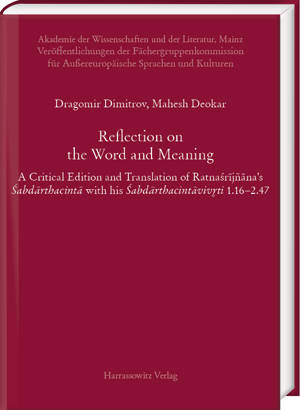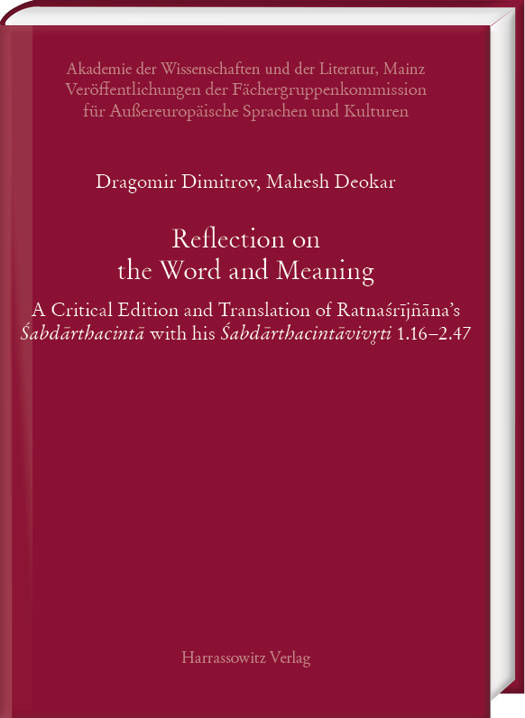
- Afhalen na 1 uur in een winkel met voorraad
- Gratis thuislevering in België vanaf € 30
- Ruim aanbod met 7 miljoen producten
- Afhalen na 1 uur in een winkel met voorraad
- Gratis thuislevering in België vanaf € 30
- Ruim aanbod met 7 miljoen producten
Reflection on the Word and Meaning
A Critical Edition and Translation of Ratnasrijnana's Sabdarthacinta with His Sabdarthacintavivrti 1.16-2.47
Mahesh Deokar, Dragomir Dimitrov
€ 166,45
+ 332 punten
Omschrijving
The Sabdarthacinta or Reflection on the Word and Meaning represents a highly intriguing treatise on Sanskrit grammar. It was composed in the mid-10th century by Ratnasrijnana, a prodigious Sinhalese Buddhist scholar who went by the name of Ratnamati during his early career, before becoming known as Ratnasrijnana and still later as Upatissa. Despite Ratna's work occupying a central position in the Candra system of grammar, established by Candragomin (ca. 5th century AD), and exerting a significant influence on grammatical thought in South and Southeast Asia, it remained forgotten for many centuries. In order to rescue Ratna's "reflections" from oblivion, it was necessary to use the only surviving textual witness, a heavily damaged palm-leaf manuscript discovered in Nepal and kept in Calcutta for a long time. The text was recovered entirely with the help of Ratna's own commentary called the Sabdarthacintavivrti and Dhammasenapati's Karika (ca. 12th century) which was found to contain an unacknowledged, very precise Pali translation of the Sanskrit text. Besides the editio princeps of the Sabdarthacinta printed in Latin script, Dragomir Dimitrov and Mahesh Deokar present the first critical edition and an English translation of the surviving part of Ratna's autocommentary (Sabdarthacintavivrti 1.16-2.47), an English rendering of the main treatise as well as two appendices with the Sabdarthacinta typeset in Devanagari script and a facsimile edition with a diplomatic transcript of the Sabdarthacintavivrti. Now that Ratna's magnificent contribution to Indian grammar has risen like a phoenix from the ashes, no serious student of Sanskrit and Pali grammar should ignore it.
Specificaties
Betrokkenen
- Auteur(s):
- Uitgeverij:
Inhoud
- Aantal bladzijden:
- 392
- Taal:
- Engels
- Reeks:
- Reeksnummer:
- nr. 11
Eigenschappen
- Productcode (EAN):
- 9783447123525
- Verschijningsdatum:
- 16/04/2025
- Uitvoering:
- Hardcover
- Formaat:
- Genaaid
- Afmetingen:
- 145 mm x 220 mm
- Gewicht:
- 521 g

Alleen bij Standaard Boekhandel
+ 332 punten op je klantenkaart van Standaard Boekhandel
Beoordelingen
We publiceren alleen reviews die voldoen aan de voorwaarden voor reviews. Bekijk onze voorwaarden voor reviews.










